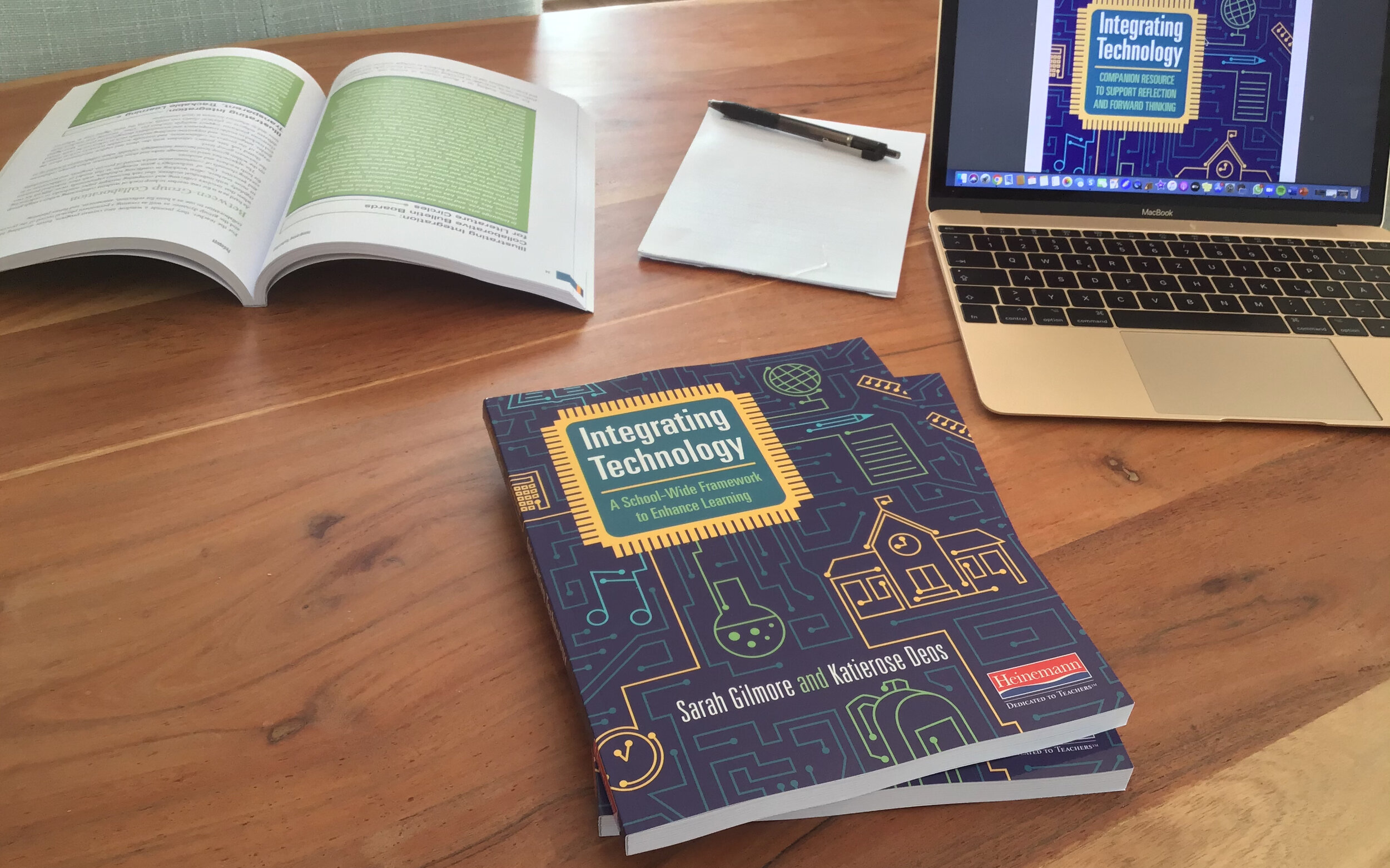Resources and Downloads
Katierose Deos (co-author of Integrating Technology) and I created a large selection of resources to support teachers with feedback, assessment, and technology integration. You can access and download these resources through the collections below

Jump to…
Graphics and Downloads
Word Walls are a staple of most Elementary classrooms and many classrooms right up to High School, but a really effective Word Wall is a lot more than a list. Download this PDF guide to learn what a Word Wall really is, how to design one and, most importantly, how best to use it in teaching to support literacy and language development.
The new school year is almost here in the Northern Hemisphere, and many teachers will be buying borders, creating color schemes, and feverishly laminating. But is all that work helping your students? How can you create a learning environment that is cosy and inviting, but also really supports learning?
Download this easy reference which lays out the most important information about designing an effective learning environment for your students.
Is homework actually worth the work?!
It’s bone of contention around the world, so download this PDF resource which lays out the most important information about making homework meaningful for your students.
6 simple suggestions to support your students and yourself during school closure and online teaching.
A free downloadable PDF flowchart to help you identify what type of feedback to give.
How much screen time is “too much”? Is screen time helpful, or harmful? What does the AAP and current research tell us about the do’s and don’ts of teaching with tech?
More Great Podcasts
In this episode for Professional Learning Conversations, Sarah Gilmore interviewed the incredible Dylan Wiliam about why and how assessment for learning - or formative assessment - works.
When it comes to teaching with tech, research clearly shows that mindset matters. So what questions can leaders and coaches ask to support teachers to explore their opinions and beliefs about technology?
There’s always something new in the world of edTech, but how do we keep our “eyes on the prize” and stay focused on student learning amid all the change?
What is the role of technology in education? What should it really be for? And how can we make sure we are achieving that purpose in a meaningful way?
What does teaching with tech look like now, during the corona times, and in the future? What do we want it to look like, and how can we get there?
Companion Resources For Our Book
A free downloadable mini-chapter all about enhancing differentiation, instruction and assessment with technology.
Free downloadable reflection and planning templates to support personal and school development of technology integration.
A free downloadable discussion and reflection framework to support planning and scaffolding of technology integration.
A free downloadable resource with digital tools and approaches to support common challenges teachers and students face with communication.
A free downloadable 53 page companion resource to the book to support reflection and discussion with teams and schools
Little Key Learning Podcast
Who hasn't at some point seen a headline that links screen time with terrifying outcomes like diabetes, obesity, poor communication, and cancer? However, with school closures forcing teaching and learning to go digital, screens are playing a bigger role in education than ever before. So, what does the research actually say about the impact of screen time on children's well-being?
In this episode we are sharing an excerpt all about the research behind screen time, from our new book, ‘Integrating Technology: A School-Wide Framework to Enhance Learning’, out now from Heinemann. We share our thoughts about why “screen time” isn’t very helpful as a phrase, and explain what the research says - and doesn’t say - about screen time and its effects on children.
In this episode we interviewed the founder of the Global Educator Collective, Kirsten Durward, about how the online community has stepped in and stepped up to ask for and give support to colleagues, and what the next steps are for teachers as this situation develops.
Managing behavior in the classroom can be a challenge: how do you reward and recognize the good behavior of your students? How do you record and address negative behavior? How do you motivate students to maintain the behavior you want to see, and change the behavior that prevents them, and others, from learning?
Many teachers turn to, or are required to use, behavior charts. From smiley faces to traffic lights with named clothes pegs or magnets, Pinterest and Teachers Pay Teachers are awash with examples of behavior chart designs you can copy or buy.
But do they work? And if so, how, when and why do they work? Do behavior charts really help our students learn to behave, and behave to learn?
Have you pushed your “Brain Buttons” lately? No? Well, have you been keeping on top of your “Ear Unlocking”? Us neither. BrainGym is a tool used by teachers around the world on the basis of the promise that it helps students to process information faster, improves balance and coordination, and “synchronize your system”.
But… does it actually work? Are the minutes and tax dollars spent on BrainGym actually helping our students to learn?
In this special episode, we chat with Professor Guy Claxton, respected cognitive science and education researcher and author of the Learning Power Approach series. We get his take on the big issues in education research today, why there is a gap between academic research findings and classroom instructional practices, and get his thoughts on steps teachers can take to bridge that gap.
Homework.
Did you shudder when you read that? If so, you’re probably a parent of a child who hates it, a teacher who hates assigning it, or remember being a student who hated doing it. It’s one of those topics that really divides people: you tend to be for homework or against it but what does the research tell us about homework?
If you are a teacher, or have ever even been in a school, you’ve definitely seen a word wall. They are a staple feature of most elementary and primary classrooms, and are also common in pre-school and up into high school. But… do they actually help students to learn, remember and use new words in their writing?
Why? Why not? And is there more to making word walls work than simply having them?
Our students spend a lot of time in our classrooms, but how can we be sure that they are set up to be effective learning environments? How should we organize our furniture? How much is too much when it comes to displays and bulletin boards? What impact do color schemes, light, and temperature have on learning?
Little Key Learning is all about making learning accessible, and so is the LKL podcast! We research the topics that affect every teacher in today’s classrooms, work out what it means and, most importantly, what it says we should actually be doing.
In the coming episodes you’ll see exactly what LKL Podcast is all about, but as you listen you might well be wondering… who exactly are we, the hosts, and why should I listen?
Webinar and Event Recordings
Publications
What do you need to think about when you’re facing remote learning and online teaching to help yourself and your students?




























A free downloadable resource with digital tools and approaches to support common challenges teachers and students face with collaboration.